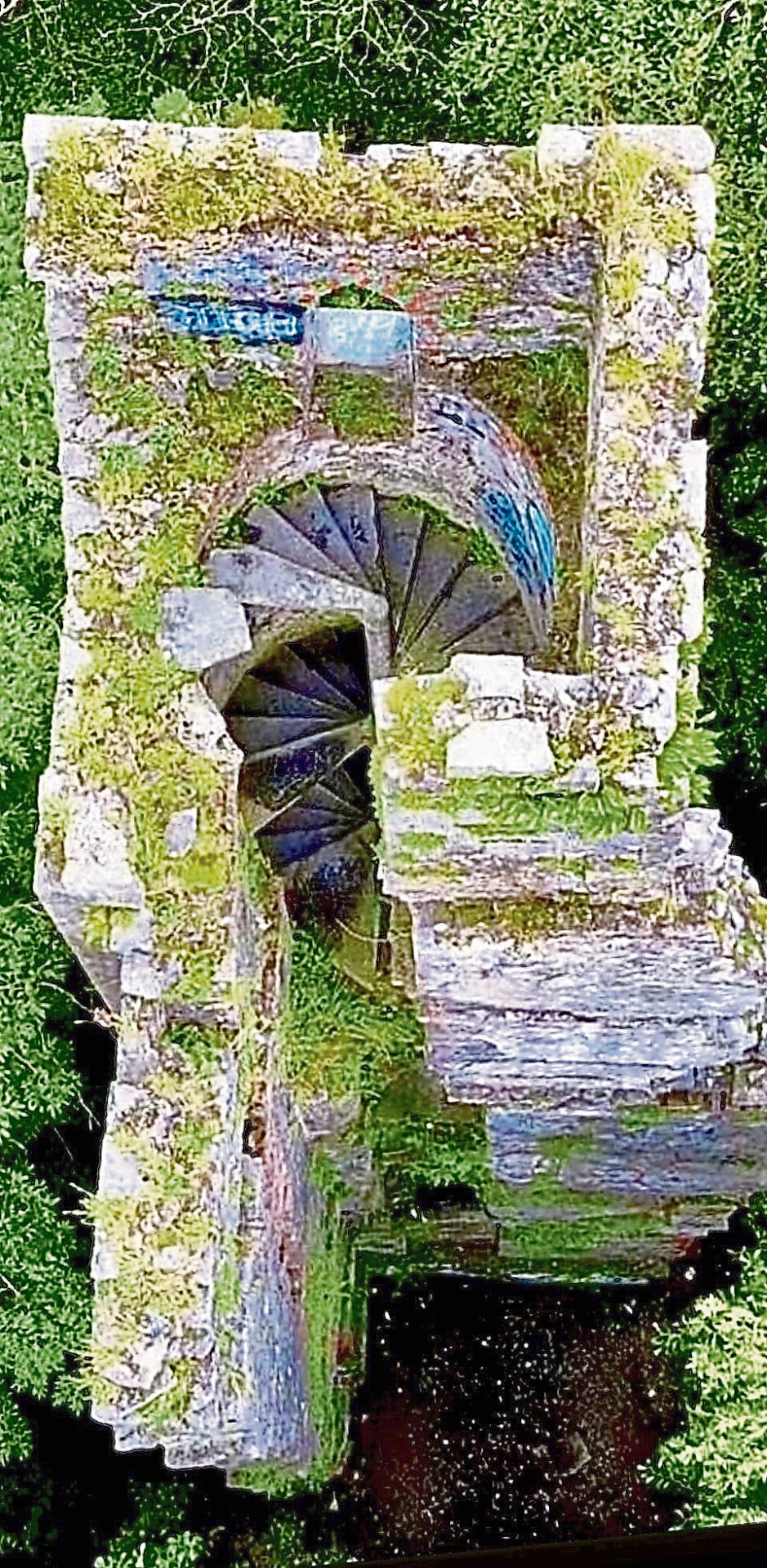
Passey Mills viewed from the Black Bridge (pre-1957) | PICTURE: Limerick Local Studies
Dr Paul O’Brien examines what remains of the old Plassey Mills and its place in Limerick’s industrial past
A WELL-known Limerick landmark, now much reduced in stature, points to a vital link to the often-overlooked industrial heritage of the city.
Plassey Mills were constructed in about 1824 on the banks of the River Shannon, thereby taking advantage of the body of water as its power source. A small-scale water mill existed on the site from the late eighteenth century.
These mills and the nearby Plassey House (c.1770) were built by Thomas Maunsell (1726-1814), a retired East India Company officer who had amassed a fortune and returned to Limerick. His daughter, Elizabeth Dorothea (1800-1886) married her cousin, Major Robert Hedges Eyre Maunsell (1781-1866). The marriage produced fourteen children.
Major Maunsell inherited Plassey townland, house, and mills, and set about enlarging the latter. The new building was on an extensive scale and a mill race had to be cut at an enormous expense to supply it with sufficient water. In July 1829, Maunsell secured the sum of £1,504 from the Consolidated fund for promoting public works, and employing the industrious poor in Ireland, to complete Plassey Canal, a project which was beneficial to his mills.
Robert’s wider interests in business included the family bank: Maunsell’s Bank. As was expected of a person of his class and rank, Robert served as a local magistrate. In 1837, he claimed the sum of £16,000 compensation from the Shannon Navigation Improvement Commissioners, which proposed the removal of his mills and mill race, a scheme that never materialised.
Maunsell’s association with the mills ceased in about 1840 when he rented Plassey Mills to the well-known Harvey family of millers in Limerick. In 1841, the Shannon Navigation Improvement Commissioners requested that tenders for the construction of a wooden bridge ‘across the river, opposite Plassey Mills’ send their proposals to W. H. Owen, engineer, Limerick. This bridge became known as the Black Bridge.
In February 1841, Plassey Mills were engulfed in fire and most of the machinery and buildings were lost. The blaze took hold during the night and was not spotted until Pat Griffin turned up for work at 6am. He immediately alerted the clerk and other workers.
Messengers were instantly despatched to town for assistance. Efforts were made to prevent the devastating fire from spreading, but without success and flames leapt from every window of the building. The contemporary press reported that a ‘large detachment of city police arrived at 7.30am under the command of Sub-Inspector Williams. The powerful engine of the West of England Insurance Company reached Plassey on a canal boat, at Hickey’s falls, and commenced pouring a stream of water on the mill, but the raging fire had become too powerful to be overcome.’
The scene resonated with an eerie cacophony of sounds – the crackling of timbers, the falling of stones, and the clanging of the weighty machinery as it crashed through the floors echoed out over the landscape. The roof was next to fall through the lofts smashing everything as it plummeted to the floor. It was quickly realised that the exertions of those present were useless and all attention was turned to saving as much of the property that the blaze had not yet reached. Workers scrambled to rescue files, books, and the contents of the office safe as well as 200 sacks of flour. However, a vast quantity of whole meal and 800 barrels of wheat were lost. By 10am, the entire concern was completely gutted and what had been the day before one of the most productive mills in the country was reduced to a smouldering skeleton.
It was estimated that the damage amounted to £10,000. The cause of the fire was never ascertained. Despite the enormous loss of property, no lives were lost. The enterprise was insured to the sum of £4,000 which was deemed sufficient to fund the rebuilding.
John Fogarty was engaged as the architect to oversee the rebuilding project and by October 1841, the mills were fully operational again. The new stone-cut mill comprised six-bays over six floors with an attached tower-like structure that housed a spiral staircase. It is this structure that survives to the present day, and which is often misdescribed as a castle/tower house.

Harvey’s connection with Plassey Mills ceased in 1861 when the concern was purchased by the firm of J. N. Russell and Sons for the sum of £10,000 which included a large tract of land, the annual value of which was estimated to be more than equal to the rent of the mills and land together.
The Russells immediately set about enlarging the complex. The mills continued in production until the late nineteenth-century when the enterprise finally ceased trading. In 1903, Norris Russell sold Plassey House and by 1910, Plassey Mills were being referred to locally as the ‘old mills.’
The site fell into ruin and finally, in 1957, all but the tower-like structure containing the spiral staircase was demolished. It now stands, 200 hundred years later, as a reminder of Limerick’s once thriving flour milling business upon which the working lives of countless labourers and the fortunes of merchants rested.
Dr Paul O’Brien lectures at Mary Immaculate College
Subscribe or register today to discover more from DonegalLive.ie
Buy the e-paper of the Donegal Democrat, Donegal People's Press, Donegal Post and Inish Times here for instant access to Donegal's premier news titles.
Keep up with the latest news from Donegal with our daily newsletter featuring the most important stories of the day delivered to your inbox every evening at 5pm.